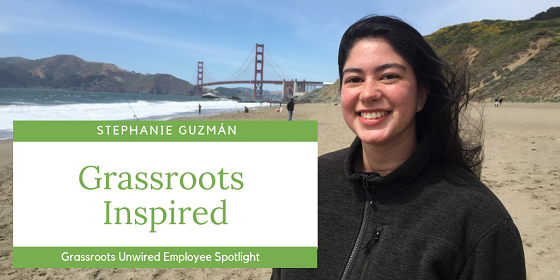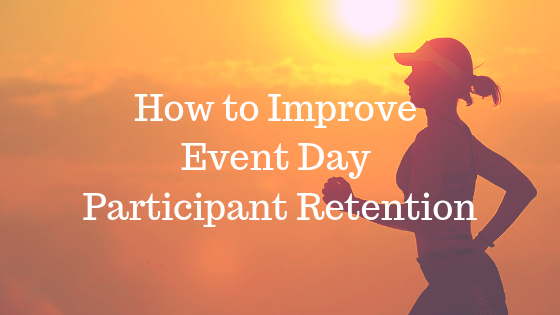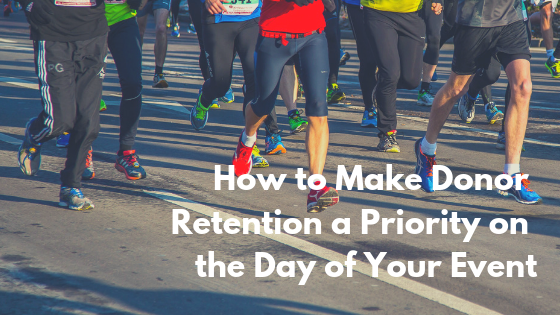3 Tips to Conducting a Successful PIT Count
 According to HUD Exchange, “The Point-in-Time (PIT) count is a count of sheltered and unsheltered homeless persons on a single night in January. HUD requires that Continuums of Care (CoCs) conduct an annual count of homeless persons who are sheltered in emergency shelter, transitional housing, and Safe Havens on a single night.”
According to HUD Exchange, “The Point-in-Time (PIT) count is a count of sheltered and unsheltered homeless persons on a single night in January. HUD requires that Continuums of Care (CoCs) conduct an annual count of homeless persons who are sheltered in emergency shelter, transitional housing, and Safe Havens on a single night.”
This year we’ve partnered with 5 unique organizations to conduct their 2020 Point-in-Time counts, from which we have come up with these 3 tips for conducting a successful count:
The Evolution of the 4EventDay Mobile App
We get it! There are a ton of moving parts to managing a successful peer-to-peer fundraising event. It can quickly get overwhelming! Our goal? Make it easier on you, your volunteers and ensure your participants have the best day-of experience. We are transforming the interactions that non-profits and their participants have on the day of their events through our 4EventDay mobile app. And after every event, we continue to ask, “What can we do to make it even better?”
NEW FEATURE: Assign Bibs at Check-In
 We are excited to announce yet another innovative new feature: assigning bib numbers at check-in! Our development team has been working hard so that the Grassroots Unwired 4EventDay mobile app can have the ability for volunteers to assign a participant’s bib number and/or race tracking ID during the mobile check-in process. This new feature makes check-in faster, more efficient and provides a positive experience for your participants.
We are excited to announce yet another innovative new feature: assigning bib numbers at check-in! Our development team has been working hard so that the Grassroots Unwired 4EventDay mobile app can have the ability for volunteers to assign a participant’s bib number and/or race tracking ID during the mobile check-in process. This new feature makes check-in faster, more efficient and provides a positive experience for your participants.
New Feature: Mark Participants as Finished!
The Why:
Our client, Swim Across America, unites the swimming community by hosting benefit swims that raise money to fund life saving cancer research and clinical trials. They came to us with a new feature request to address an important safety issue they have on the day of their peer-to-peer events. Swim Across America needed the ability to identify when a swimmer has left the water. They needed to be able to see if everyone made it out of the water safely and in turn know how many individuals (if any) are still in the water.
The Shots Story- Language Barriers Make a Difference
When my father was 18 years he worked as a busboy, clearing dishes in upscale restaurants in downtown Long Beach, California.
It was his first year in the United States, and like many, many, immigrants chasing the American Dream, he went to community college for evening classes to learn English.
How to Spend Your P2P Event Advertising Budget
Let’s be honest, your advertising budget for your peer-to-peer event is never as big as you would like or even need it to be. That’s why collecting data around what ad method is most successful in getting individuals to participate in your event is imperative to ensure you are spending your advertising dollars where it truly counts!
Employee Spotlight: Stephanie Guzmán
Stephanie Guzmán is Grassroots Unwired’s Designer/UX/Project Manager. Read more to learn about her first few months on the team and her insights on user experience, young graduate life adjustment, and Amish Market pretzel logs.
Improve Participant Retention
As you know, keeping a participant involved in your peer-to-peer events year over year isn’t always easy. But by adding mobile technology to the day of your event, it can be! We find that by creating a smoother and more efficient day-of experience, you can create a lasting impression and ensure higher participant retention rates.
Use Mobile Technology to Create a Positive Experience from the Start
Here’s how you can use mobile technology to create a positive experience from the start, leaving participants with a positive impression that lasts:
Event Day Donor Retention
What is your strategy for using a peer-to-peer event to grow your donor base? Do you have a protocol to engage and retain first-time participants? Or do the majority of these people end up being “one and done” – engaged for the day but not for the future? In our experience, we’ve found that organizations often feel forced to choose the latter.
[Guest Post] Got Technology Blind Spots? Ask These 8 Questions Before the Demo!
Choosing a new software platform for your nonprofit can cause lots of stress. But, in my experience, there’s one part of the process that especially makes nonprofit accidental techies freak out a little bit.
There are three key phases to choosing a new software platform:







![[Guest Post] Got Technology Blind Spots? Ask These 8 Questions Before the Demo!](https://www.grassrootsunwired.com/media/blog-post-website.png)